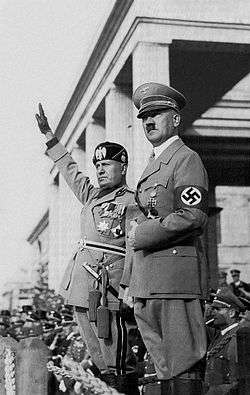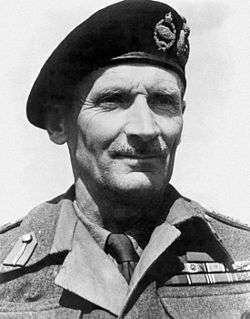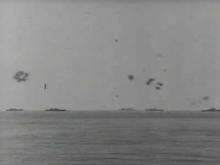Egypt during World War II

In 1882, Egypt was occupied by the United Kingdom, following the Orabi Revolt against the Egyptian khedive. Though never formally a British colony, Egypt was essentially under British control thereafter, even after the formal recognition of Egyptian independence in 1922, with British troops remaining around the Suez Canal zone. Full Egyptian self-rule was not realised until the Egyptian Revolution of 1952.
History of British influence
Egypt had long been viewed by the British as strategic link to India. Napoleon's invasion of Egypt in 1798 badly destabilized the local Mameluke dynasty and the Ottoman Turks invited the British to play a more direct role in Egypt. In 1875, the British government purchased the local Egyptian government's remaining shares of the Suez Canal.
In 1882 Ahmed Urabi led a revolt of Egyptian military officers and commoners against European and Ottoman domination of Egypt. A British expeditionary force crushed this revolt. While this was meant to be a temporary intervention, British troops stayed in Egypt, marking the beginning of British occupation and the virtual inclusion of Egypt within the British Empire, nominally as a kingdom ruled by the Muhammad Ali dynasty. In deference to growing nationalism after World War I, the UK unilaterally declared Egypt independent in 1922. British influence, however, continued to dominate Egypt's political life and fostered fiscal, administrative, military and governmental reforms.
United Kingdom's Mediterranean fleet
In the mid-1930s, the headquarters of the Royal Navy's Mediterranean Fleet were moved from Malta, to Alexandria, Egypt.
King Farouk of Egypt
At that time Egypt was ruled by King Farouk I, who had ascended the throne in 1936 and would remain in power until 1952. During the hardships of World War II, criticism was leveled at Farouk for his lavish lifestyle. His decision to keep all the lights burning at his palace in Alexandria, during a time when the city was under blackout due to Italian bombing, particularly angered some. The royal Italian servants of Farouk were not interned and there is an unconfirmed story that Farouk had told Sir Miles Lampson, "I'll get rid of my Italians, when you get rid of yours." This remark was a reference to the ambassador's Italian wife.
Following a ministerial crisis in February 1942, the British government, through its ambassador in Egypt, Sir Miles Lampson, pressed Farouk to have a Wafd or Wafd-coalition government replace Hussein Sirri Pasha's government. On the night of 4 February 1942, British troops and tanks surrounded Abdeen Palace in Cairo and Lampson presented Farouk with an ultimatum. Farouk capitulated, and Nahhas formed a government shortly thereafter.
After the war, King Farouk brought large numbers of German military and intelligence personnel and ranking ex-Nazis to Egypt as "advisors". The Germans realized Farouk's political weakness and allegedly began conspiring with Nasser and the Free Officers Movement who were also working closely with the Muslim Brotherhood, to overthrow Farouk, which finally happened in 1952. This move infuriated the British, who had been training and assisting the Egyptian Army since the creation of the Kingdom of Egypt in 1922.
Fascist Italian invasion

In September 1940, Italian dictator Benito Mussolini sent Italian forces stationed in Libya to launch an invasion into British-held Egypt and set up defensive forts at Sidi Barrani.
Allied forces, though greatly outnumbered, launched a counter-attack, Operation Compass. It was more successful than envisaged and resulted in massive numbers of Italian prisoners and the advance of the Allied forces up to El Agheila. This defeat of Italian forces did not go unnoticed and soon the Deutsches Afrikakorps, commanded by Erwin Rommel were sent in to reinforce them.
There had been a large Italian community in Cairo prior to the war. Following the June 10, 1940 declaration of war, nearly all of the Italian men were arrested and nearly all Italian property was seized, leaving the women in poverty.
Italian troops had attacked from their colony of Libya into Egypt, which was under British protection, and occupied Sidi Barrani. On December 8, 1940, British and Indian troops under the command of Major-General O'Connor attacked against the Italian rear, via a gap in the defenses south of Sidi Barrani. Planning of the operation (and discovery of the gap) is credited to Brigadier Eric Dorman-Smith, who served as an adviser to O'Connor.
Italian defeat

As a counter-espionage measure, many of the British Commonwealth troops involved were not disabused of the fictitious notion that Operation Compass was an exercise until they were very nearly engaged in combat. The attack was supported by 25 pounder artillery and Blenheim bombers and was centred on the advance of Mk.II Matilda tanks. Within an hour of the onset of combat, Italian General Pietro Maletti was dead and 4,000 Italian soldiers had surrendered. Within three days, 237 artillery pieces, 73 tanks, and 38,300 soldiers had been captured. The attacking forces then moved west along the Via della Vittoria, through the Halfaya Pass and captured Fort Capuzzo, Libya.
The attack eventually continued, ending with the 7th Armoured Division cutting off the Italian retreat. After ten weeks the Allies had advanced 800 km, destroying 400 tanks and 1,292 artillery pieces and capturing 130,000 POWs - the Commonwealth forces suffered 494 fatalities and 1,225 wounded. However, the advance stopped short of driving the Italians out of North Africa. As the advance reached Al Argheila, Churchill ordered that it be stopped and that troops be dispatched to defend Greece. A few weeks later the first troops of the German Afrika Korps began arriving in Tripoli (Operation Sonnenblume), and the desert war took a completely different turn. (The Battle of Alamein: Turning Point, World War II p. 1-50.)
Nazi German invasion
Adolf Hitler sent his army to North Africa starting in February 1941 (see Operation Sonnenblume). Nazi Germany's General Erwin Rommel's Deutsches Afrikakorps coming from victories at Tobruk in Libya, and in a classic blitzkrieg, comprehensively outfought British forces. Within weeks the British had been pushed back into Egypt.
German Defeat
Rommel's offensive was eventually stopped at the small railway halt of El Alamein, just 150 miles from Cairo. In July 1942 the First Battle of El Alamein was lost by Rommel because he was suffering from the eternal curse of the desert war, long supply lines. The British, with their backs against the wall, were very close to their supplies, and had fresh troops on hand. In early September 1942 Rommel tried again to break through the British lines during the Battle of Alam Halfa. He was decisively stopped by the newly arrived British commander, Lieutenant General Bernard Montgomery.
With British forces from Malta interdicting his supplies at sea, and the massive distances they had to cover in the desert, Rommel could not hold the El Alamein position forever. Still, it took a large set piece battle from late October to early November 1942, the Second Battle of El Alamein to defeat the Germans forcing them to retreat westwards towards Libya and Tunisia.
The German's strategic goal had been to slice through Egypt, capture the Suez Canal, enter the British Mandate of Palestine, activate an Arab uprising against the British, and finally link up with German forces thrusting south from Southern Russia. But all this was foiled by Montgomery's victory over Rommel at El Alamein.
Allied victory

The leadership of the United Kingdom's General Bernard Montgomery at the Second Battle of El Alamein, or the Battle of Alamein at El Alamein in Egypt, marked a significant turning point of World War II and was the first major victory by British Commonwealth forces over the German Army. The battle lasted from October 23 to November 3, 1942. Following the First Battle of El Alamein, which had stalled the Axis advance, British general Bernard Montgomery took command of the Eighth Army from Claude Auchinleck in August 1942. Success in the battle turned the tide in the North African Campaign. Some historians believe that the battle, along with the Battle of Stalingrad, were the two major Allied victories that contributed to the eventual defeat of Nazi Germany.
The situation
By July 1942 the German Afrika Korps under General Erwin Rommel had struck deep into Egypt, threatening the vital Allied supply line across the Suez Canal. Faced with overextended supply lines and lack of reinforcements and yet well aware of massive Allied reinforcements arriving, Rommel decided to strike at the Allies while their build-up was still not complete. This attack on 30 August 1942 at Alam Halfa failed, and expecting a counterattack by Montgomery's Eighth Army, the Afrika Korps dug in. After six more weeks of building up forces the Eighth Army was ready to strike. 200,000 men and 1,000 tanks under Montgomery made their move against the 100,000 men and 500 tanks of the Afrika Korps.
The Allied plan
With Operation Lightfoot, Montgomery hoped to cut two corridors through the Axis minefields in the north. Armour would then pass through and defeat the German armour. Diversionary attacks in the south would keep the rest of the Axis forces from moving northwards. Montgomery expected a twelve-day battle in three stages — "The break-in, the dog-fight and the final break of the enemy."
The Commonwealth forces practised a number of deceptions in the months prior to the battle to wrong-foot the Axis command, not only as to the exact whereabouts of the forthcoming battle, but as to when the battle was likely to occur. This operation was codenamed Operation Bertram. A dummy pipeline was built, stage by stage, the construction of which would lead the Axis to believe the attack would occur much later than it in fact did, and much further south. To further the illusion, dummy tanks made of plywood frames placed over jeeps were constructed and deployed in the south. In a reverse feint, the tanks for battle in the north were disguised as supply lorries by placing a removable plywood superstructure over them.
The Axis were dug-in along two lines, called by the Allies the Oxalic Line and the Pierson Line. They had laid around half a million mines, mainly anti-tank, in what was called the Devil's gardens.
The battle

The battle opened at 2140 hours on October 23 with a sustained artillery barrage. The initial objective was the Oxalic Line with the armour intending to advance over this and on to the Pierson Line. However the minefields were not yet fully cleared when the assault began.
On the first night, the assault to create the northern corridor fell three miles short of the Pierson line. Further south they had made better progress but were stalled at Miteirya Ridge.
On October 24 the Axis commander, General Stumme (Rommel was on sick leave in Austria), died of a heart-attack while under fire. After a period of confusion while Stumme's body was missing, General Ritter von Thoma took command of the Axis forces. Hitler initially instructed Rommel to remain at home and continue his convalescence but then became alarmed at the deteriorating situation and asked the Desert Fox to return to Africa if he felt able. Rommel left at once and arrived on October 25.
For the Allies in the south, after another abortive assault on the Miteirya Ridge, the attack was abandoned. Montgomery switched the focus of the attack to the north. There was a successful night attack over the 25-26th. Rommel's immediate counter-attack was without success. The Allies had lost 6,200 men against Axis losses of 2,500, but while Rommel had only 370 tanks fit for action Montgomery still had over 900.
Montgomery felt that the offensive was losing momentum and decided to regroup. There were a number of small actions but, by October 29, the Axis line was still intact. Montgomery was still confident and prepared his forces for Operation Supercharge. The endless small operations and the attrition by the Allied airforce had by then reduced Rommel's effective tank strength to only 102.
The second major Allied offensive of the battle was along the coast, initially to capture the Rahman Track and then take the high ground at Tel el Aqqaqir. The attack began on November 2, 1942. By the 3rd Rommel had only 35 tanks fit for action. Despite containing the Allied advance, the pressure on his forces made a retreat necessary. However the same day Rommel received a "victory or death" message from Hitler, halting the withdrawal. But the Allied pressure was too great, and the German forces had to withdraw on the night of November 3–4. By November 6 the Axis forces were in full retreat and over 30,000 soldiers had surrendered.
Churchill's summation
Winston Churchill famously summed up the battle on 10 November 1942 with the words "now this is not the end, it is not even the beginning of the end. But it is, perhaps, the end of the beginning."
The battle was Montgomery's greatest triumph. He took the title "Viscount Montgomery of Alamein" when he was raised to the peerage.
The Torch landings in Morocco later that month marked the effective end of the Axis threat in North Africa.
Egyptian fleet damages
| Wikimedia Commons has media related to Army of Egypt during World War II. |
Many Egyptian ships were sunk during the war by U-boats, including:
U-81
Nine ships were Egyptian of the 27 ships sunk by German submarine U-81 (1941).
| Date | Ship | Nationality | Tonnage | Fate |
|---|---|---|---|---|
| 16 April 1942 | Bab el Farag* | 105 | Sunk | |
| 16 April 1942 | Fatouhel el Rahman* | 97 | Sunk | |
| 19 April 1942 | Hefz el Rahman* | 90 | Sunk | |
| 22 April 1942 | Aziza* | 100 | Sunk | |
| 11 February 1943 | Al Kasbanah* | 110 | Sunk | |
| 11 February 1943 | Sabah al Kheir* | 36 | Sunk | |
| 20 March 1943 | Bourgheih* | 244 | Sunk | |
| 28 March 1943 | Rouisdi* | 133 | Sunk | |
| 25 June 1943 | Nisr* | 80 | Sunk |
- Sailing vessel
U-77
3 Egyptian ships were sunk and one survived with damage by German submarine U-77 (1940)
| Date | Ship | Tonnage | Nationality | Fate |
|---|---|---|---|---|
| 30 July 1942 | Fany* | 43 | Sunk | |
| 1 August 1942 | St. Simon* | 100 | Sunk | |
| 6 August 1942 | Adnan* | 155 | Damaged | |
| 6 August 1942 | Ezzet* | 158 | Sunk |
* Sailing vessel
U-83
One ship was sunk by German submarine U-83 (1940)
| Date | Ship | Nationality | Tonnage | Fate and location |
|---|---|---|---|---|
| 8 June 1942 | Said | 231 | Sunk |
* Sailing vessel
See also
External links
- El Alamein at the Wayback Machine (archived March 22, 2008)
- Text of Cairo Declaration
References
- The Battle of Alamein: Turning Point, World War II by Bierman and Smith (2002), ISBN 0-670-03040-6.
- MacGregor, Andrew (2006). A military history of modern Egypt: from the Ottoman Conquest to the Ramadan War. Praeger Security International General Iterest. ISBN 0-275-98601-2.
- Alamein by C E Lucas Phillips ISBN 0-330-30011-3
- Rothwell, Steve (1998). "Military Ally or Liability: The Egyptian Army 1936–1942". Army Quarterly and Defence Journal. 128 (2).